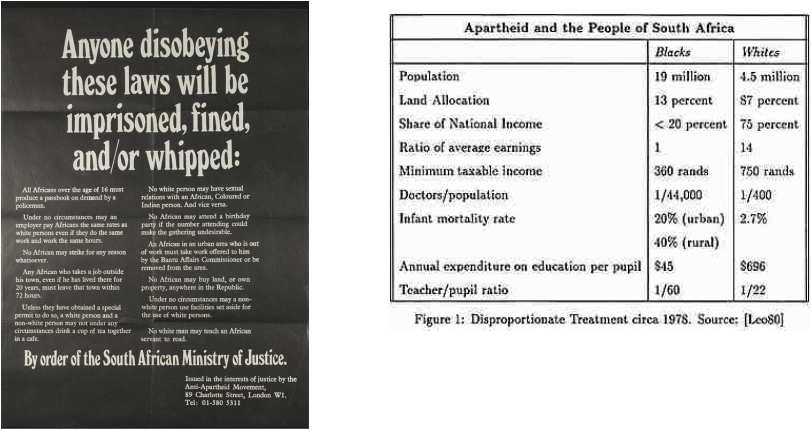Apartheid, a word that echoes with injustice and inequality, refers to a system of racial segregation and discrimination that was enforced in South Africa from 1948 to 1994. Understanding its complexities requires delving into its historical roots, its implementation, and its eventual dismantling.
The word "apartheid" is Afrikaans, meaning "apartness." It encapsulated a set of laws and policies designed to maintain white minority rule and suppress the rights of the majority Black African population, as well as other racial groups classified as "Coloured" (mixed race) and "Indian." This system permeated every aspect of life, from where people could live and work to whom they could marry.
The Foundations of Apartheid
While racial segregation had existed in South Africa long before 1948, it was the National Party's election victory in that year that formalized it into a comprehensive legal framework. The roots of this ideology can be traced back to colonial times and the belief in white superiority, which was further solidified by economic factors and the desire to control the Black African workforce.
The Dutch East India Company's arrival in the 17th century marked the beginning of European settlement and the displacement of indigenous populations. Over time, the Boers (farmers of Dutch descent) established their own republics, often engaging in conflict with the British Empire and the native African tribes. These historical conflicts laid the groundwork for the racial tensions that would later fuel apartheid.
Key Apartheid Laws
Several pivotal laws formed the backbone of the apartheid system. The Population Registration Act of 1950 classified all South Africans by race, assigning them to one of four categories: White, Black (African), Coloured, or Indian. This classification determined a person's rights and opportunities.
The Group Areas Act of 1950 segregated residential areas, forcing people of color to live in designated areas, often far from economic opportunities and with limited resources. This law led to the forced removal of millions of people from their homes and communities, causing immense suffering and social disruption.
The Pass Laws, which required Black Africans to carry identification documents at all times, restricted their freedom of movement and employment. Failure to produce these passes could result in arrest and imprisonment. These laws were a constant source of harassment and control, effectively turning Black Africans into second-class citizens in their own country.
Resistance to Apartheid
The implementation of apartheid sparked widespread resistance both within South Africa and internationally. The African National Congress (ANC), initially advocating for non-violent protest, eventually adopted armed struggle under the leadership of figures like Nelson Mandela.
Other resistance groups, such as the Pan Africanist Congress (PAC), also emerged, advocating for a more radical approach to liberation. The Sharpeville Massacre in 1960, where police opened fire on peaceful protesters, became a turning point, galvanizing international condemnation and further fueling the anti-apartheid movement.
International pressure, including economic sanctions, boycotts, and diplomatic isolation, played a crucial role in weakening the apartheid regime. Countries, organizations, and individuals around the world united in their condemnation of the system, demanding an end to racial segregation and discrimination in South Africa.
The Dismantling of Apartheid
By the late 1980s, the apartheid regime was facing increasing internal and external pressure. Economic sanctions were crippling the South African economy, and the government was struggling to maintain control in the face of growing unrest and resistance.
In 1990, President F.W. de Klerk took the momentous step of unbanning the ANC and other political organizations, releasing Nelson Mandela from prison after 27 years of incarceration. These actions paved the way for negotiations and the eventual dismantling of apartheid.
The first multiracial elections were held in 1994, with Nelson Mandela elected as South Africa's first Black president. This marked the end of apartheid and the beginning of a new era for South Africa, one focused on reconciliation and nation-building.
The Legacy of Apartheid
The legacy of apartheid continues to shape South Africa today. While the legal framework of racial segregation has been dismantled, the social and economic inequalities created by the system persist. Addressing these inequalities remains a major challenge for the country.
Land ownership, access to education, and economic opportunities remain unevenly distributed along racial lines. The government has implemented various policies aimed at redressing these imbalances, but progress has been slow and uneven.
The lessons learned from South Africa's experience with apartheid are relevant to understanding issues of race, inequality, and social justice around the world. It serves as a reminder of the dangers of discrimination and the importance of fighting for equality and human rights for all.
Studying apartheid emphasizes the importance of critical thinking, historical analysis, and understanding the complex interplay of political, economic, and social factors that contribute to injustice. It also inspires reflection on how to build a more just and equitable world for future generations.

